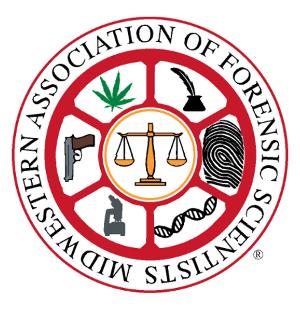Two Microtrace Scientists Present at Annual MAFS Meeting in Des Moines
 This week (12-16 September 2022), the Midwestern Association of Forensic Scientists (MAFS) is holding its 51st annual meeting in Des Moines, IA. Two Microtrace scientists are presenting at the conference.
This week (12-16 September 2022), the Midwestern Association of Forensic Scientists (MAFS) is holding its 51st annual meeting in Des Moines, IA. Two Microtrace scientists are presenting at the conference.
Jason Beckert will give a presentation entitled “The Greatest Fiber Case that Never was,” concerning an actual forensic investigation where fibers were the only evidence linking the suspect to the crime. Kelly Brinsko-Beckert will talk on the “Forensic Microscopy of Pigmented Fibers.”
For more information or to register for the conference, please click here.
Abstract- The Greatest Fiber Case That Never Was
This presentation will focus on a homicide investigation in which fibers were the only evidence linking the suspect to the crime. No eyewitnesses. No fingerprints. No DNA. It was a complex case involving numerous potential transfers, a variety of fiber types, and hundreds of individual fibers that were eventually analyzed to the fullest extent of our laboratory capabilities at the time. Realizing that this was their only evidence, the district attorneys authorized additional fiber analyses in an effort to preemptively investigate potential defense theories before the trial. These analyses went above and beyond typical Q vs K forensic fiber comparisons, eventually providing strong support for the prosecution’s theory. However, an unexpected twist of fate changed the trajectory of this case and ensured that it would never be prosecuted in a court of law.
Abstract- Forensic Microscopy of Pigmented Fibers
Fibers are one of the most common types of trace evidence encountered, and color is a primary feature of nearly every fiber comparison. Color is utilized at nearly every stage of analysis: from the initial search for target fibers and microscopical comparison of questioned and known samples, to late-stage comparisons by microspectrophotometry. In contrast to dyed fibers, pigmented fibers (i.e., solution dyed fibers) are colored by the addition of insoluble pigment to the liquid polymer prior to extrusion. Such fibers are becoming increasingly common due to a variety of factors, including their ability to withstand harsh cleaning agents, inherent resistance to fading, and environmentally friendly manufacturing methods. The number of pigment types, their identity, particle size, and density of pigmentation represent unexploited properties that can be used to evaluate fiber associations or provide investigative information during a fiber analysis. However, there have been no systematic studies of pigmented fibers; and therefore, no practical guidance is available to the bench-level analyst to identify, characterize, or interpret pigmented fiber evidence in forensic fiber cases.
This research fills this knowledge gap through a systematic study of pigmented fibers. The selected fiber samples span major manufacturers, include various applications of pigmented fibers, and represent the variety of colors and polymers that are produced. This presentation will provide an overview of results arising from the critical study of samples from this population of pigmented fibers by polarized light, oil immersion, and fluorescence microscopy. This study of fibers is supported by research into sample preparation techniques, including longitudinal whole mounts and cross sections, that have been optimized to maximize the resolution of individual pigment particles that often approach, or at times exceed (are smaller than) the resolution limits afforded by light microscopy. The range of information that has been obtained and tabulated from these samples includes methods of recognizing pigmented fibers, estimates of the number of different pigment types present in a fiber, and tabulations of the color, size, and morphology of individual pigment grains detected in a given sample.
MAFS
The Midwestern Association of Forensic Scientists was founded in 1971 as a non-profit organization where scientists from the Midwest could gather and discuss unique cases or research to help further the field and solve problems within the disciplines. Over the years, MAFS has grown to include participants from all over the U.S. and even some from outside the U.S.; however, the original goal of the organization has not changed.
Annual fall meetings and spring workshops are held to provide opportunities for scientists to advance their expertise and share their knowledge with others.
MAFS purpose is to encourage the exchange of ideas and information within forensic science as is exemplified through the mission statement “To further the field of forensic science by leading to inspire and inspiring to learn.”
How May We Help You?
Contact usto discuss your project in more detail.







